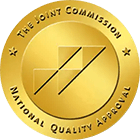In today’s ever-evolving conversation surrounding cannabis, one contentious question frequently arises: Does weed kill brain cells? This inquiry is not just a product of modern curiosity but has its roots in decades of debate, stigma, and scientific exploration. With more countries and states legalizing cannabis for both medicinal and recreational purposes, understanding its impact on our brain’s health is more crucial than ever.
History of Cannabis Use
The relationship between humans and cannabis is ancient, stretching back thousands of years. Its roots lie deep within various civilizations, where it served a myriad of purposes – from religious rituals to rudimentary medicine.
Origins and Traditional Use
Cannabis is believed to have originated in Central Asia, with archaeological evidence suggesting its use as far back as 5000 B.C. Ancient Chinese texts, for instance, refer to it as “Ma,” documenting its role in herbal remedies and as a staple fiber source. By 2000 B.C., the plant had spread to India, where it became integral to religious rituals, often referred to in sacred texts like the Vedas. Its use as an intoxicant and medicinal herb was also prevalent in ancient civilizations from the Middle East to the steppes of Russia.
Early Studies and Societal Views on Cannabis
As the plant made its way to Europe and later to the Americas, it became the subject of curiosity, scrutiny, and controversy. In the 19th century, European doctors began studying cannabis for its potential therapeutic properties, and it was even introduced into Western medicine for ailments ranging from migraines to insomnia.
However, the 20th century brought a wave of prohibitionist sentiments. Propelled in part by sensationalist media and political agendas, cannabis became vilified, leading to its criminalization in many parts of the world. A significant narrative that emerged during this time was the association of cannabis with cognitive decline and the notion that it might “kill” brain cells. Much of this stemmed from early studies on animals, often with methodologies now considered questionable.
As the century progressed, this negative perception persisted, even as anecdotal evidence and underground cultures celebrated the plant’s therapeutic and creative properties. The late 20th and early 21st centuries saw a renewed interest in the scientific community to understand cannabis more thoroughly. This was driven by both its increasing societal acceptance and the need to debunk or validate long-standing claims about its effects on the brain.
Today, as we continue to explore the plant’s impact on the human brain, it’s essential to recognize the deep historical context from which our current perspectives emerge. By doing so, we can approach the topic with an informed, open-minded stance, appreciating both the plant’s rich history and the evolving scientific understanding of its effects.
History of Cannabis Use
The realm of scientific research on cannabis and its effects on brain health is vast, complex, and, at times, contradictory. Over the past few decades, as technology and methodologies have advanced, researchers have been better equipped to analyze the intricacies of the cannabis plant and its interactions with the human brain.
Short-term Effects of Cannabis Use on the Brain
Initial studies have shown that the short-term use of cannabis can lead to temporary impairments in cognitive function, memory, and attention. THC (tetrahydrocannabinol), the primary psychoactive compound in cannabis, affects the brain’s endocannabinoid system, leading to the altered perception of time, euphoria, and other familiar sensations associated with a “high.” However, these effects are generally transient and tend to dissipate as the drug wears off.
Long-term Effects of Cannabis Use and its Impact on Brain Cells
The long-term effects of cannabis on the brain have been a topic of significant debate. Some studies suggest that prolonged, heavy use during adolescent years—when the brain is still developing—may lead to lasting cognitive deficits or structural changes in the brain. Conversely, other research indicates that adult brains are less susceptible to lasting negative effects, and the noted deficits might be reversible upon cessation of cannabis use. The idea that cannabis “kills” brain cells has largely been debunked. Yet, it’s essential to recognize that the long-term implications, particularly in heavy users or those who start young, are still not entirely understood, necessitating continued research and a cautious approach.
While much has been learned, many aspects of cannabis and its relationship with brain health remain enigmatic. The increasing legalization and decriminalization of the plant worldwide will hopefully pave the way for more comprehensive and unbiased studies in the future.
Marijuana and IQ Loss
A large study in New Zealand found that persistent marijuana use disorder with frequent use beginning in adolescence was linked with a loss of an average of 6 IQ points measured in mid-adulthood. And those who quit using marijuana as adults did not recover the lost IQ points.
Still, more research is necessary to determine whether marijuana use causes long-term IQ losses and whether factors that weren’t measured in the earlier research (such as the increasing amounts of THC) are important. Likewise, drawing definite conclusions about long-term effects on the human brain from previous studies is often limited by the facts that many participants use multiple substances, and there is not enough information about their mental functioning before the study.
Research available at this time offers some observation of the short-term effects but it’s hard to draw a definite conclusion regarding long-term effects. This is because many studies track small samples of people over short periods. Hopefully, this will change in the near future. The National Institutes of Health (NIH) began the Adolescent Brain Cognitive Development (ABCD) study in 2015 which seeks to understand how tobacco, alcohol, marijuana, and other drug use affects adolescent health and brain development.
Treating a Marijuana Addiction (Marijuana Use Disorder)
Marijuana use disorders (MUDs) are similar to other substance use disorders. The average adult getting treatment for MUD has used marijuana nearly every day for more than 10 years and has attempted to quit more than 6 times. Individuals with MUD, particularly adolescents, frequently also suffer from other psychiatric disorders (dual diagnosis). They may also be using or addicted to other substances such as alcohol or cocaine.
Behavioral Therapies
Studies show that effectively treating mental health disorders with standard treatments that involve medications and behavioral therapies can help reduce marijuana use. This is especially true among people involved with heavy use and those with more chronic mental disorders. These behavioral treatments have been proven to be effective:
Medications for Marijuana Use Disorder
At this time, the FDA hasn’t approved any medications for the treatment of MUD. But since sleep problems are a prominent issue in marijuana withdrawal, some studies are looking at the effectiveness of medications that help sleep. Other medications that look promising are an anti-anxiety medication called buspirone and an anti-epileptic drug called gabapentin. These medications may improve sleep and executive function (memory, flexible thinking, and self-control).
Other substances being studied include:
Treatment Programs
Because marijuana is not as hard on the brain as many “harder” drugs, many people are able to quit without a detox or residential treatment. However, for people who live in an environment that makes it extremely difficult to stop using, an inpatient or residential treatment center may be the best choice to get the proper treatment for marijuana dependency.
Available treatment programs include:
Allow Achieve Wellness & Recovery to Help You
Marijuana use is gradually becoming accepted just like alcohol use, so many people don’t think of marijuana as an addiction problem. But, just like alcohol, marijuana is no joke and it can become an addiction and ruin a life. There’s no reason to let that happen. Achieve Wellness and Recovery can offer a full continuum of care from residential treatment to sober living and aftercare.
Are you struggling with an addiction to marijuana? Do you have a loved one who is? You deserve the best treatment available and the best opportunity to succeed. Our experienced, fully licensed professionals are immediately available to talk to you or you may schedule an appointment. Contact us today.
We work with most insurance companies. Please note we are not affiliated with or endorsed by insurance companies.
No Medicaid Accepted.

Medically Reviewed By
Nicole Rettino-Lambert LCSW, LCADC, CCS, CCTP, CSTIP
Nicole Rettino-Lambert is a dually licensed clinician with over 20 years of experience working with children, adolescents, and adults in both addiction treatment and mental health treatment. Along with extensive experience in clinical work, she has held leadership roles in both inpatient and outpatient addiction treatments centers in New Jersey. Throughout her various leadership positions, Rettino-Lambert has developed clinical programming, assisted staff in their growth and development in the clinical field, and had the privilege of helping numerous individuals on their path to recovery.
As a clinician, Rettino-Lambert specializes in addiction trauma, mental health, self-harm behaviors, anxiety, intimacy issues, sex addiction, and personality disorders. She holds certifications as a clinical trauma professional and sex informed professional. Her passion and purpose as a clinician are to help individuals find their voice, purpose, and motivation through their recovery. She takes pride in being part of the process that helps those who are fighting for their lives to achieve both sobriety and wellness.In her role as a Clinical Director at Achieve Wellness and Recovery, Rettino-Lambert works tirelessly to ensure that her staff feels supported in their roles, continues their clinical growth and development, and is empowered to become the best versions of themselves. She firmly believes that all the staff are an essential part of clients’ recovery journey and that they deserve continuous compassion, empathy, acknowledgment, and support from leadership.


















